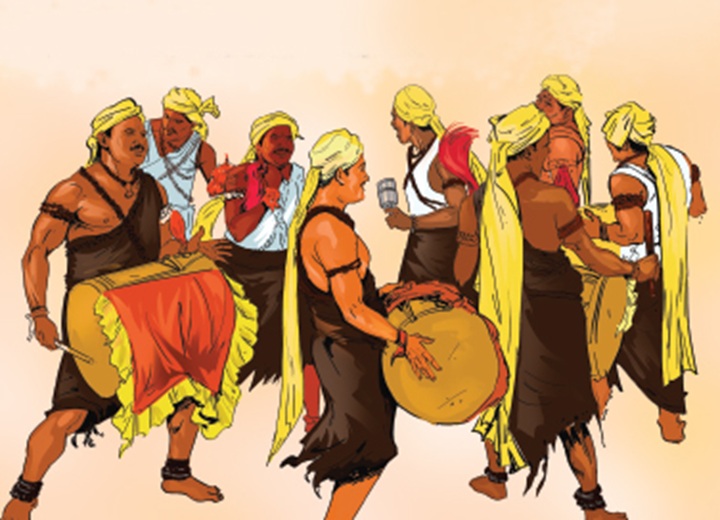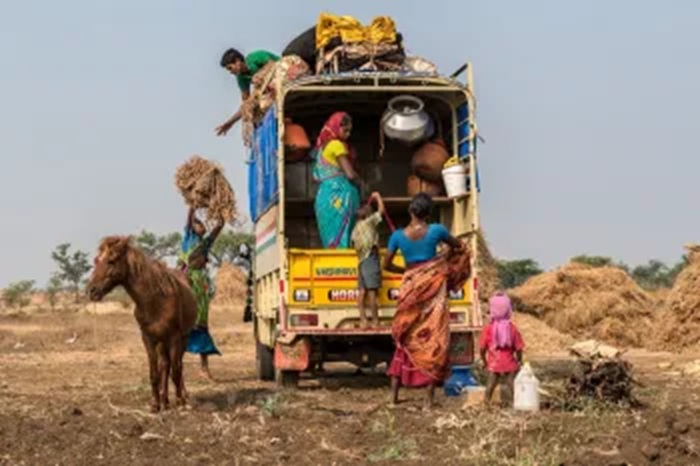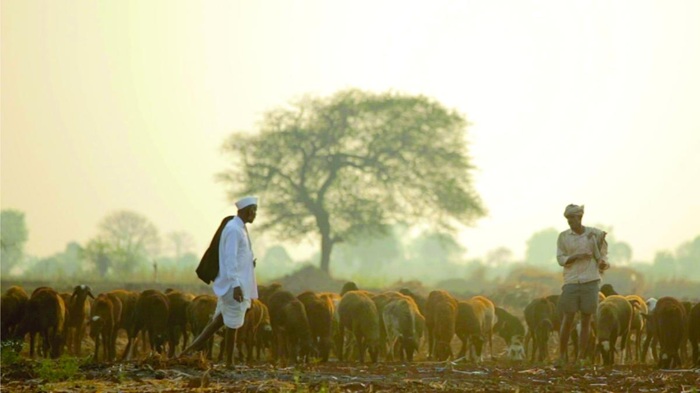By the symbol of Kuruba I refer to the representations, figurative representations, and customary images of the Kuruba, who are pastoral, and agricultural peoples living mostly in India, e.g. Karnataka, Telangana, Andhra Pradesh, and Tamil Nadu. The deep-rooted images are deep rooted in history as well as spiritualism, as well as culture because it makes an identity that goes beyond generations and a sense of appreciation by the community. Within the representation of multiple symbolic forms, over the hundreds of years of existence, such as a clan insignia, sacred patterns and ritual embarkment, the Kurubas have been able to express their everyday beliefs, values and social disposition.
The article will discuss the source of their rise, nature, and influences of Kurubas symbols in the social structure of the community, spiritual life of the society and the modern culture manifestations. Through reviewing their development and their use today, we are able to understand how symbols remain cohesive and a representation of the people of the Kuruba in this day and age.
What Is Kurubas Symbol?
A symbol of the Kuruba is any visual image, emblem or icon that is inherent to the Kuruba community. They are frequently transmitted across generations and manifest in local clothing, rituals, folk art and in festivals. They are employed to identify clan membership, social status, religious affiliation and sometimes also occupation of the person or a family in the community. Kurubas symbols act as the cultural binding agents that make members feel a sense of belongingness and continuity with the ancient culture they inherited.
Importance of Kurubas Symbols
Kurubas have always been known to attach importance to symbols in their own culture as it serves as a marker of identity and continuity. These enable the members of the community to demonstrate their pride, keep in touch with their roots and convey the values to the foreigners. The symbols Kurubas adopt also have a significant bearing in rituals and festivals where they are used to summon protection, prosperity, or favors of gods who are eminent figures to the community. In addition to the spiritual meaning, these symbols also serve to strengthen social unity as the difference in, e.g., various clans or family groups is addressed.
In contemporary settings, Kurubas symbols are used to conserve cultural heritage against the trend of globalisation and fast-paced changes in the society. Artistic reproduction of Kurubas imagery on textiles, art, and the Internet provides the community with a chance to represent their identity with pride and inform others about their past. They also have the opposite effect of creating openings of conversation in cultural functions, heritage festivals and even in online spaces by ensuring that cultural mediation occurs as a hybrid of the present with the cultural heritage.
Most Common Kurubas Symbols
The symbols used by Kurubas can have a variety of forms with more or less different meaning and aim.
Clan Symbols
The best known type are lan symbols that convey lineage and lineal descent. The designs tend to depict animals, plants or geometric shapes that bear a special meaning to a family or sub-group within the community.
| Clan Name | Symbol | Description |
| Beeravara | Lion motif | Represents bravery and leadership qualities within the clan |
| Dodda Kuruba | Bull symbol | Reflects pastoral occupation and cattle rearing heritage |
| Hoysala Kuruba | Lotus design | Symbolizes purity, growth, and spiritual devotion |
| Doddanna | Elephant emblem | Represents wisdom, strength, and prosperity |
These symbols are traditionally painted on doors, banners, or embroidered on clothing during important ceremonies.
Ritualistic Symbols
Ritualistic symbols are used in religious ceremonies and festivals, often carrying protective and auspicious meanings. They appear on temple decorations, ceremonial attire, and sacred implements.
| Symbol | Purpose | Usage |
| Snake pattern | Protection against evil spirits | Painted on walls during Navaratri or village rituals |
| Cow hoofprint | Blessings for livestock prosperity | Marked near cattle sheds or ceremonial grounds |
| Trident (Trishula) motif | Worship of local deities | Carved on shrines or ceremonial staffs |
| Circular sun emblem | Fertility and growth | Used in seasonal harvest festivals |
These symbols strengthen spiritual connections and ensure blessings during community events.
Artistic and Decorative Symbols
Artistic symbols often appear in folk paintings, embroidery, and woven patterns. They narrate stories, myths, or historical events and are educational tools for passing down cultural knowledge.
| Art Form | Symbol | Cultural Significance |
| Wall murals | Pastoral scenes | Depict daily life, traditions, and historic events |
| Embroidery | Geometric patterns | Represent clan-specific motifs or ancestral stories |
| Woven baskets | Animal motifs | Showcase livestock importance and agricultural heritage |
| Folk paintings | Deity icons | Educate children on local gods and community folklore |
These symbols are not only visually appealing but also deeply meaningful, reinforcing identity through art.
Modern Digital and Social Symbols
In contemporary times, Kurubas symbols have adapted to digital platforms, allowing younger members to connect and express identity online. Social media, digital banners, and virtual community forums now incorporate these emblems for cultural awareness.
| Platform | Symbol Use | Purpose |
| Facebook Groups | Clan or community logo | Connect members and represent heritage |
| Custom stickers | Express cultural pride and group identity | |
| Story highlights icons | Share rituals, festivals, and community events | |
| Websites | Stylized digital emblem | Promote Kuruba culture globally |
Such adaptation makes the symbols of Kuruba relatable to the contemporary world and yet maintain the old meaning of the symbols.
Kuruba’s dangerously high shelled symbols
The symbolization of Kurubas was done by the elderly, artists, and religious leaders who got ideas mainly from natural life, myths, and everyday events. Designs were done with much care to indicate both physical and spiritual life of a community. Contemporary designs incorporate conventional elements along with computer technology in order to enable the versatility of the symbols in merchandise, web content and multimedia presentation. The combination of the innovative and the traditional brings about cultural continuation into the next generation.
Where will you find the symbols of Kurubas?
The symbols of Kurubas can be found everywhere in the society, including their religious practices and all cultural activities. They appear in temples, in ritual attires, banners, decorations found in the households, and in the digital media. Each symbol is accompanied by a story whether spiritual, historical, or social related to the present members and also to their ancestors.
Frequently asked questions about Kurubas Symbol
What does a Kurubas symbol mean?
Kurubas symbol is a symbol, motif, or image which represents identity, culture and/or spiritual beliefs of the Kuruba community.
What is the origin of the symbols of Kuruba?
They had their roots in pastoral and agrarian economies, religious practices and ancestry.
Do Kurubas symbols have application in personal projects?
Personal non-commercial use such as artistic and educational purposes is generally acceptable. The commercial use has to be approved by community authorities.
Do the symbols of Kuruba apply even today?
They do, because they still cohesively organize the community, maintain a cultural heritage, and are used as markers of identity.
In what ways are Kurubas symbols different in respect to generic cultural symbols?
The symbols that are used by the Kuruba have their deep-rooted connections with spiritual practices, social organisation, and ancestry, which are practiced today and altered by time and still retain their basic meanings.
Kuruba’s symbols are much more than aesthetic figures; they are strong cultural devices that bear the burden of the past, religiosity, and social self-identification. The symbols, starting with the symbols used by traditional clans to the symbols in software and jargons, continued to evolve though with some consistency. They bring the community together, they inform the younger generations and maintain a physical attachment to an ancestral history. Kuruba symbols still confirm identity, celebrate tradition and make members of the community proud in their shifting world, and this way the wealth of culture of the Kurubas can safely remain intact and is cherished.



